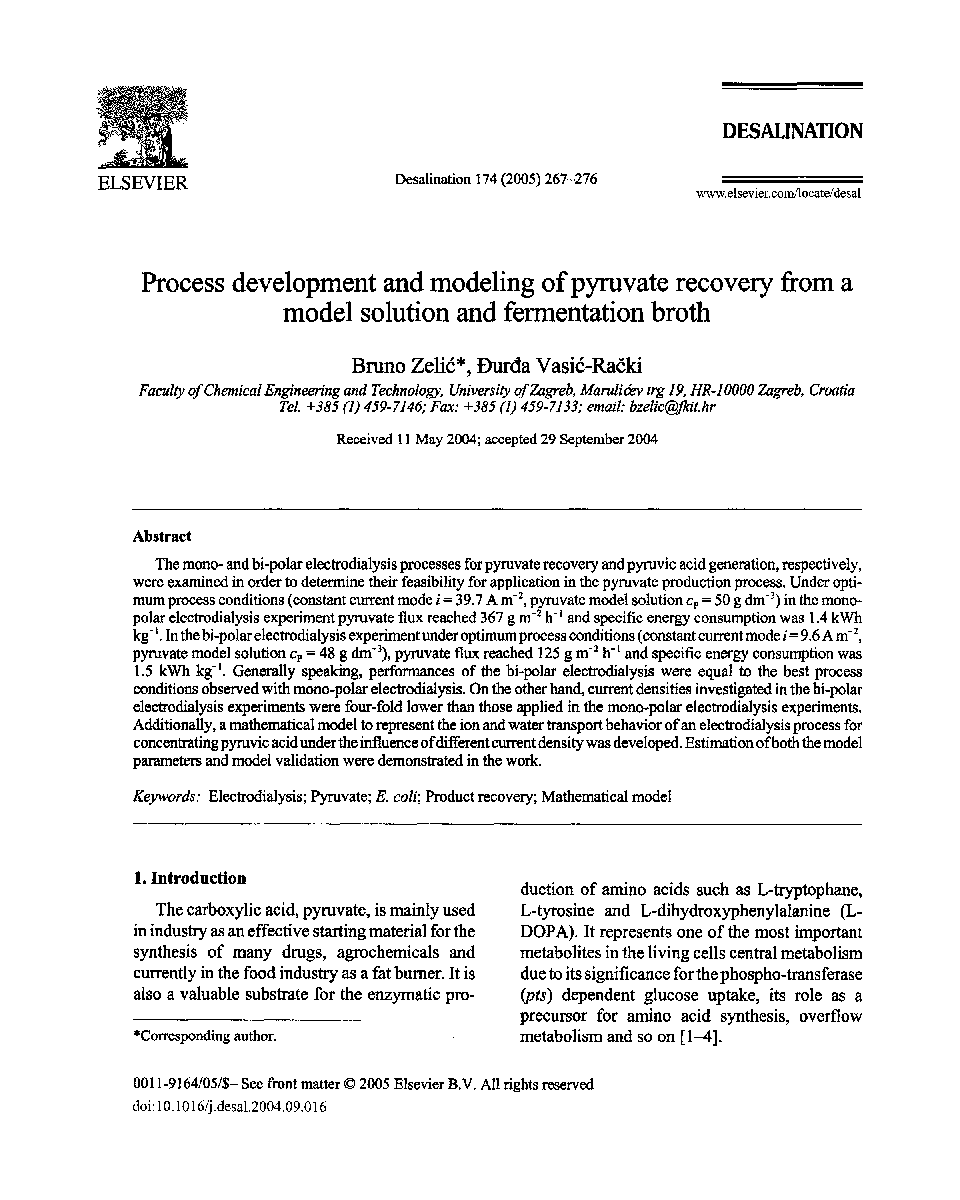| Article ID | Journal | Published Year | Pages | File Type |
|---|---|---|---|---|
| 10386373 | Desalination | 2005 | 10 Pages |
Abstract
The mono- and bi-polar electrodialysis processes for pyruvate recovery and pyruvic acid generation, respectively, were examined in order to determine their feasibility for application in the pyruvate production process. Under optimum process conditions (constant current mode i = 39.7 A mâ2, pyruvate model solution cp = 50 g dmâ3 in the monopolar electrodialysis experiment pyruvate flux reached 367 g mâ2 hâ1 and specific energy consumption was 1.4 kWh kgâ1. In the bi-polar electrodialysis experiment under optimum process conditions (constant current mode i = 9.6 A mâ2, pyruvate model solution cp = 48 g dmâ3, pyruvate flux reached 125 g mâ2 hâ1 and specific energy consumption was 1.5 kWh kg-1. Generally speaking, performances of the bi-polar electrodialysis were equal to the best process conditions observed with mono-polar electrodialysis. On the other hand, current densities investigated in the bi-polar electrodialysis experiments were four-fold lower than those applied in the mono-polar electrodialysis experiments. Additionally, a mathematical model to represent the ion and water transport behavior of an electrodialysis process for concentrating pyruvic acid under the influence of different current density was developed. Estimation of both the model parameters and model validation were demonstrated in the work.
Related Topics
Physical Sciences and Engineering
Chemical Engineering
Filtration and Separation
Authors
Bruno ZeliÄ, ÄurÄa VasiÄ-RaÄki,
